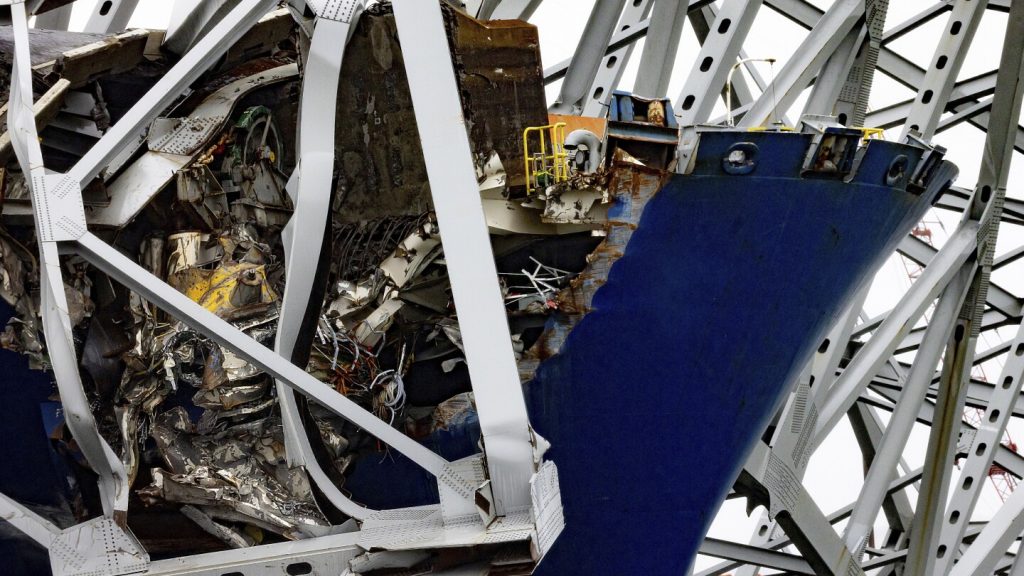The Port of Baltimore’s only maritime shipping terminal, Tradepoint Atlantic, is gearing up to handle an influx of ships as crews work to clear the wreckage of the collapsed Francis Scott Key Bridge. With access to the port’s main terminals blocked, the terminal will unload and process an estimated 10,000 vehicles over the next 15 days. This includes redirecting ships to alternate channels while work continues to open a third channel that will accommodate larger vessels and restore more commercial activity along the East Coast.
Salvage operations have been hindered by bad weather and murky waters in the Patapsco River, limiting visibility for divers. The collapse of the bridge, caused by a cargo ship losing power, resulted in the deaths of six workers from a roadwork crew. The cargo ship remains stationary with its 21 crew members still on board. The scope of the catastrophe is evident from the debris scattered in the river, with twisted steel girders, crushed shipping containers, and fallen street lights visible from above. Divers are facing challenging underwater conditions as they work to map the wreckage on the river bottom using sonar technology.
The Maryland Senate unanimously passed a bill to authorize the governor to use the state’s rainy day fund to assist port employees who are out of work due to the closure of the port. The bill also aims to provide assistance to small businesses to avoid layoffs and encourage companies that have relocated to return to Baltimore once the port reopens. President Joe Biden is scheduled to visit the collapse site, highlighting the significance of the Port of Baltimore as one of the largest on the East Coast. The port handles a large volume of cars and farm equipment and plays a critical role in the city’s maritime culture.
The ongoing cleanup efforts involve lifting undamaged containers off the cargo ship and removing steel and concrete debris embedded in its bow. The salvage operation is being aided by a large floating crane named “Chessy” and divers who are navigating the tangled, muddy web underwater. The state of Maryland is taking proactive measures to support employees and businesses affected by the port closure, with the hope of restoring normal operations as soon as possible. The closure of the port has also caused other vessels to be stuck in Baltimore’s harbor, impacting shipping traffic along the East Coast. The coming days will be crucial in determining the progress of the cleanup efforts and the eventual reopening of the Port of Baltimore.















